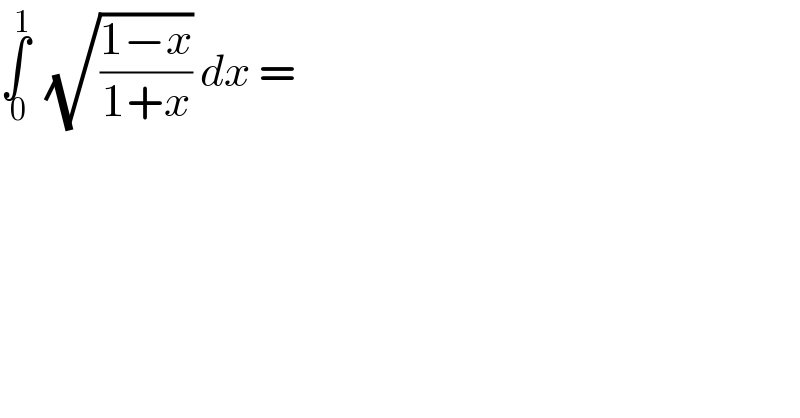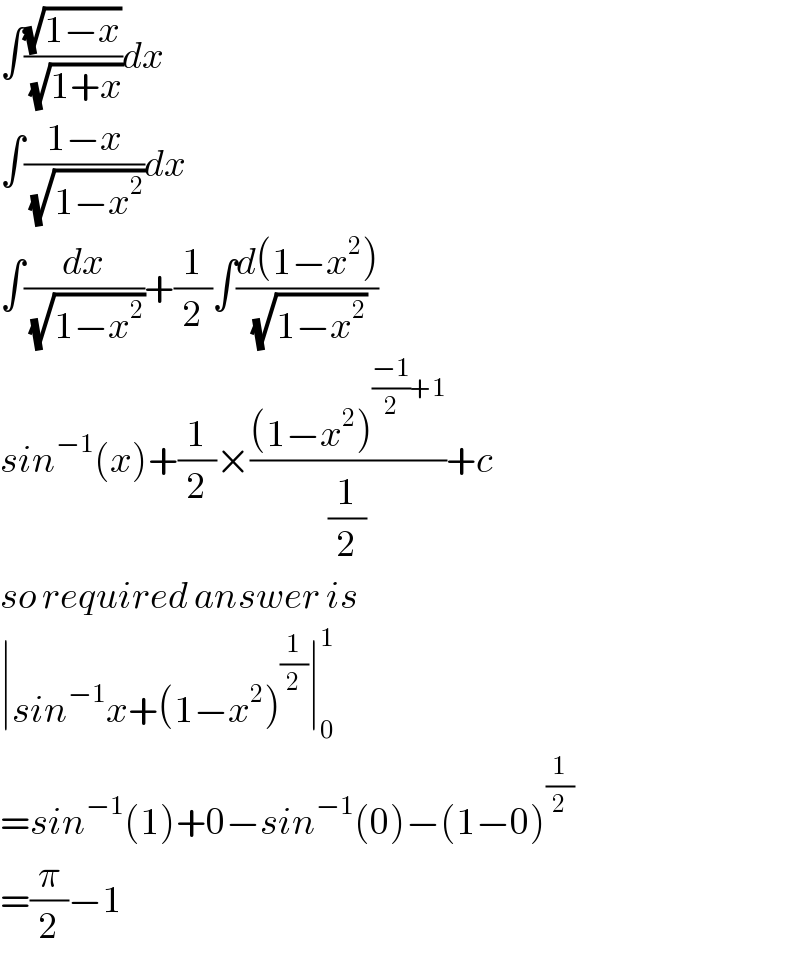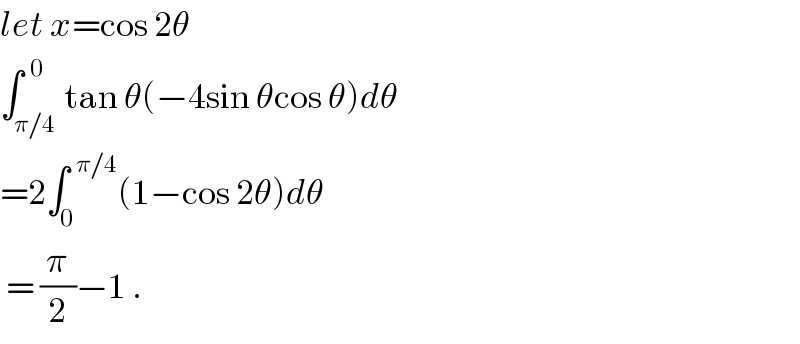
Question and Answers Forum
Question Number 54033 by qw last updated on 28/Jan/19

Commented by maxmathsup by imad last updated on 29/Jan/19
![let I =∫_0 ^1 (√((1−x)/(1+x)))dx let use the chan. (√((1−x)/(1+x)))=t ⇒((1−x)/(1+x)) =t^2 ⇒ 1−x =t^2 +t^2 x ⇒1−t^2 =(1+t^2 )x ⇒x =((1−t^2 )/(1+t^2 )) ⇒ (dx/dt) =((−2t(1+t^2 )−(1−t^2 )(2t))/((1+t^2 )^2 )) =((−2t−2t^3 −2t +2t^3 )/((1+t^2 )^2 )) =((−4t)/((1+t^2 )^2 )) ⇒ I = −∫_0 ^1 t(((−4t)/((1+t^2 )^2 )) )dt =4 ∫_0 ^1 (t^2 /((1+t^2 )^2 )) dt =4{ ∫_0 ^1 ((1+t^2 −1)/((1+t^2 )^2 ))dt}=4{∫_0 ^1 (dt/(1+t^2 )) −∫_0 ^1 (dt/((1+t^2 )^2 ))} but ∫_0 ^1 (dt/(1+t^2 )) =[arctant]_0 ^1 =(π/4) ∫_0 ^1 (dt/((1+t^2 )^2 )) =_(t =tanθ) ∫_0 ^(π/4) (((1+tan^2 θ))/((1+tan^2 θ)^2 ))dθ = ∫_0 ^(π/4) (dθ/(1+tan^2 θ)) =∫_0 ^(π/4) cos^2 θ dθ =∫_0 ^(π/4) ((1+cos(2θ))/2) dθ =(π/8) +(1/4)[sin(2θ)]_0 ^(π/4) =(π/8) +(1/4) ⇒ I =4{(π/4) −(π/8) −(1/4)} =π−(π/2) −1 =(π/2) −1 .](Q54148.png)
Answered by tanmay.chaudhury50@gmail.com last updated on 28/Jan/19

Answered by ajfour last updated on 28/Jan/19

